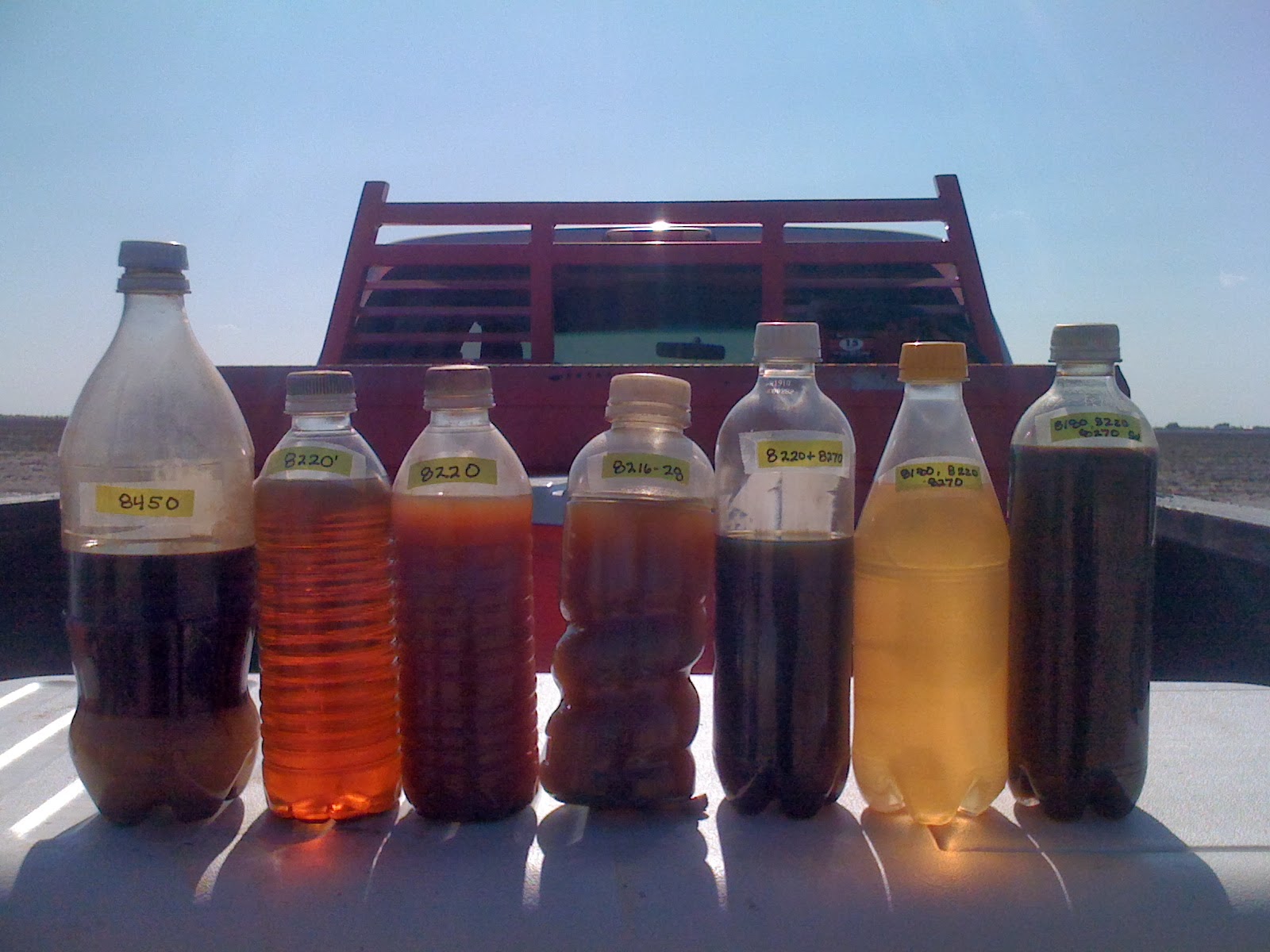Crude oil, coal and natural gas are fossil fuels, formed millions of years ago from the remains of dead sea plants and animals, decayed under the sea beneath layers sand and mud, under the condition of high pressure, heat and lack of oxygen, these organic compounds turned into coal, crude oil and gas.
Video: How Crude oil is formed:
What is crude oil?
- oil found underground is called crude oil or petroleum oil - from almost solid to gaseous form, contain little foreign substances such as sulphur.
- crude oil is a complex mixture of hydrocarbons. As the name suggested, hydrocarbons are molecules contain only hydrogen and carbon elements, bonded covalently. These hydrocarbon compounds are organic compounds, organic because it is formed from living things.
- Non-renewable resource, fossil fuel.
- bitumen, naphtha, paraffin, diesel oil, fuel oil are few examples of hydrocarbon compounds found in the crude oil.
 |
| Crude oil |
 |
| Examples of structural molecules of hydrocarbons |
 |
| Crude oil from an oil field in Texas, USA |
Not all crude oil are black. High quality oils can be golden or amber in colours. Young crude oil may be light to colourless, from almost solid to gaseous form depends on location and depth of oilfields.
|
Crude Oil Refinery - Fractional Distillation
 |
| A fractionating column |
 |
| crude oil extraction and refinery |
Hydrocarbons contain a lot of energy. To take advantage of this energy, crude oil must go through refining process at an oil refinery. Fractional distillation technique is used to break crude oil into different fractions or class of compounds of similar size.
Gases condense at the top of the column, liquids in the middle and solids stay at the bottom. The column is hot at the bottom and cool at the top. Substances with high boiling points condense at the bottom and substances with low boiling points condense at the top.
Most fractions of product are use as fuels. The bottom two, lubricating oil (very viscous /sticky) and bitumen (solid) are less inflammable and not used as fuels. Bitumen is the residue of fractional
distillation process.
 |
| Fractional Distillation Process for refining crude oil |
Most fractions of product are use as fuels. The bottom two, lubricating oil (very viscous /sticky) and bitumen (solid) are less inflammable and not used as fuels. Bitumen is the residue of fractional
distillation process.
How fractional distillation works
Hydrocarbon of different sizes are condensed and separated in the different height in the fractionating column because they have different boiling points.
The crude oil is heated up to about 400oC to vapour. As the vapour passes into the fractionating column, the smaller (and lighter) hydrocarbon molecules with lower boiling points condense higher up the column. The larger (and heavier) hydrocarbon molecules with higher boiling points condense in the lower part of the column.
The smallest hydrocarbon is methane (CH4), which is a gas that is a lighter than air. Longer chains with 5 or more carbons are liquids. Very long chains are solids like wax or tar. By chemically cross-linking hydrocarbon chains we can get everything such as synthetic rubber, nylon, plastics, paint and many other products. Hydrocarbon chains are very versatile! The crude oil is heated up to about 400oC to vapour. As the vapour passes into the fractionating column, the smaller (and lighter) hydrocarbon molecules with lower boiling points condense higher up the column. The larger (and heavier) hydrocarbon molecules with higher boiling points condense in the lower part of the column.
 |
| Household products, shirt, cosmetics and paint products from crude oil. |
For revision:
Oil Refining - IGCSE past year question paper 1
nigga
ReplyDeletefantastic job on writing this…
ReplyDeleteSoap n noodle 80:20